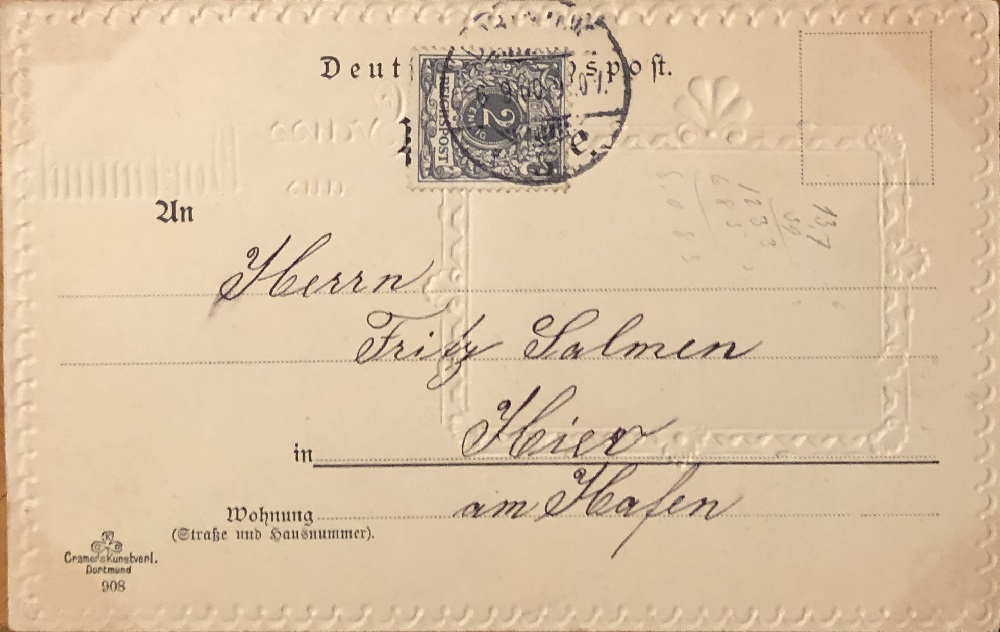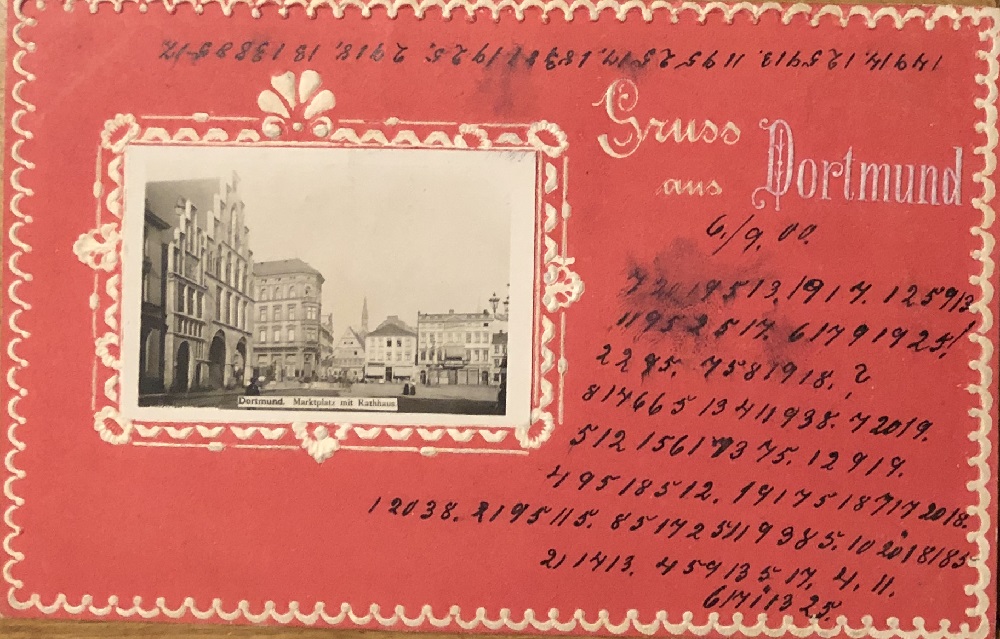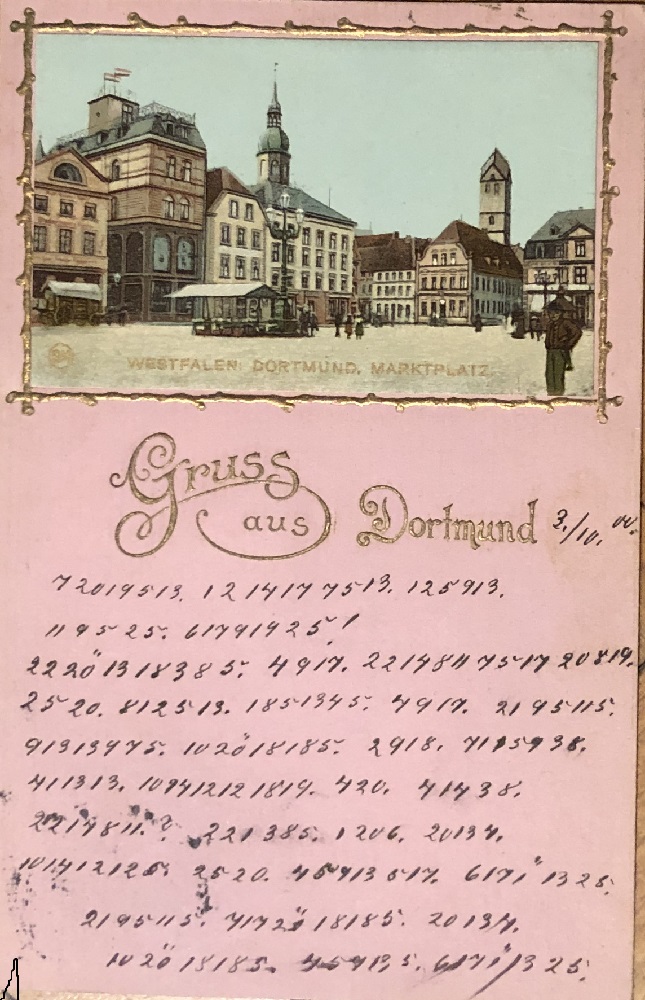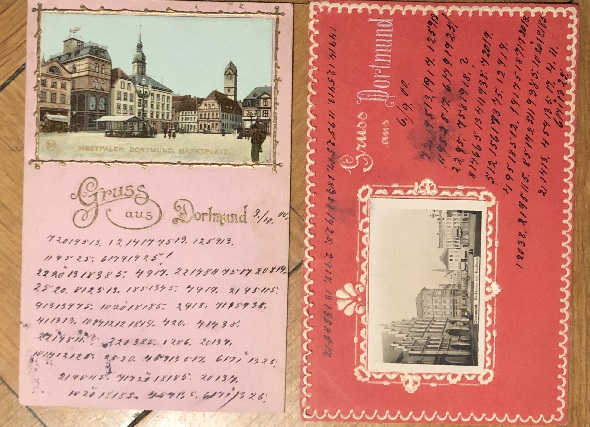Here are two cryptograms that are easy to solve: a postcard sent from Dortmund, Germany, in September 1900 and another one sent from the same place a few weeks later.
My friend Tobias Schrödel …

Source: Schrödel
… not only is a great comedian and a leading crypto book expert, but also a collector of encrypted postcards. Frequent readers of this blog know that I have introduced several dozens of cards from his collection in the last few years. As good as all of them were solved by my readers.
A postcard from Dortmund
Today, I’m writing about two more postcards Tobias provided me. The cipher used by the sender is not especially complicated, so I’m sure these messages will soon be broken.
The first postcard, dated September 6th 1900, was sent from Dortmund, Germany, to a recipient named Fritz Salmen living at a place I have difficulties to read. It might be “Hier am Hafen” (“Here at the harbour”), which sounds strange, but makes sense, as there is a large river port in Dortmund. Apparently, the address part “at the harbour” was enough for the postman to locate the recipient.

Source: Schrödel
On the picture side of the card we can read the encrypted message:

Source: Schrödel
As it seems, each letter of the alphabet is encrypted with a one or two-digit number.
Another postcard from Dortmund
The second card is dated October 10th 1900. The recipient is again Fritz Salmen, but this time the place of residence is a little more specific: Weststraße 9 in Cörne near Dortmund.

Source: Schrödel
Cörne is today spelled Körne and the Weststraße (West Street) still exists. Again, the message is encrypted:

Source: Schrödel
Can a reader decipher the two messages? As I said, it’s not very difficult.
Follow @KlausSchmeh
Further reading: Unsolved: A strange encrypted postcard from Newton, Iowa
Linkedin: https://www.linkedin.com/groups/13501820
Facebook: https://www.facebook.com/groups/763282653806483/



Kommentare (5)